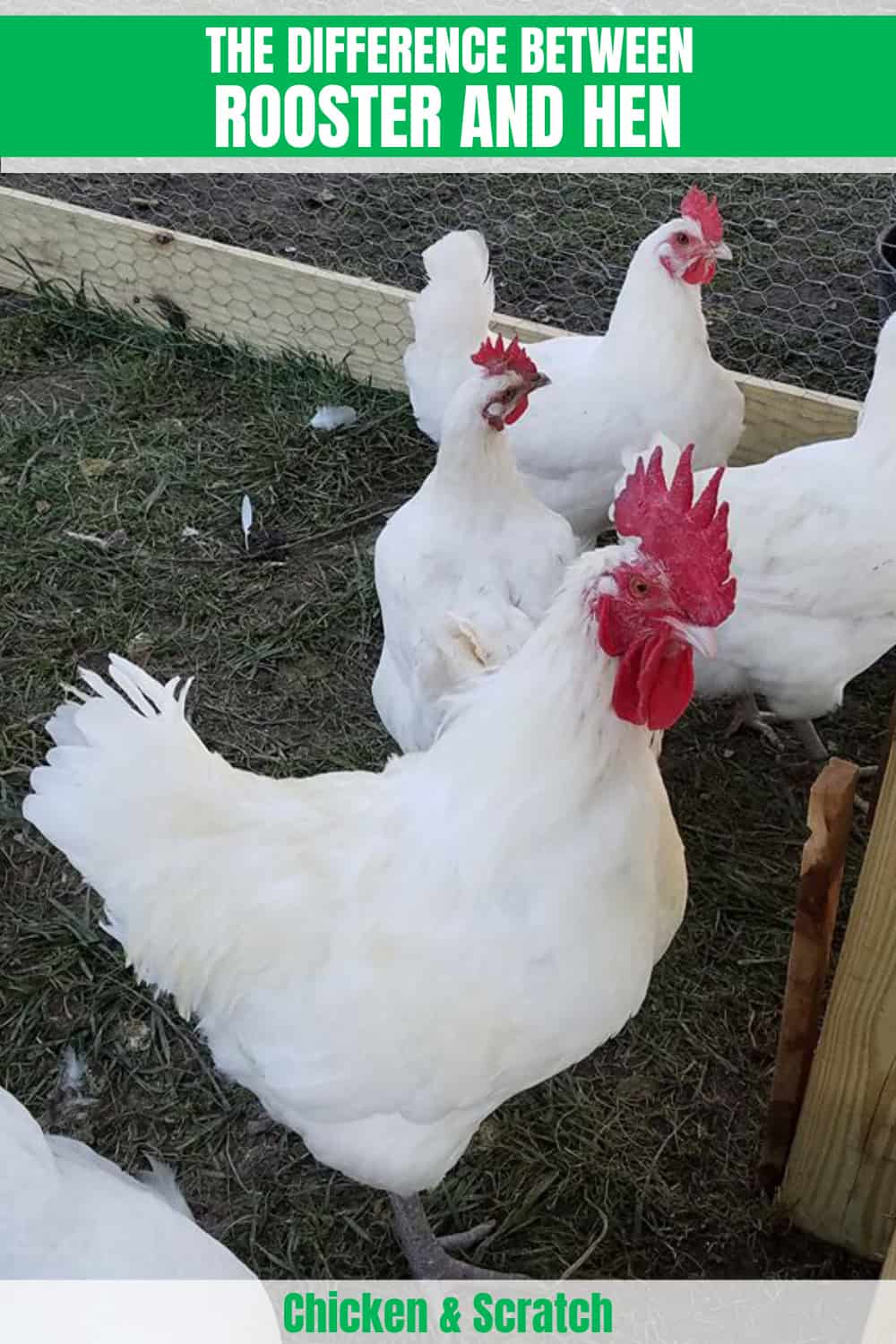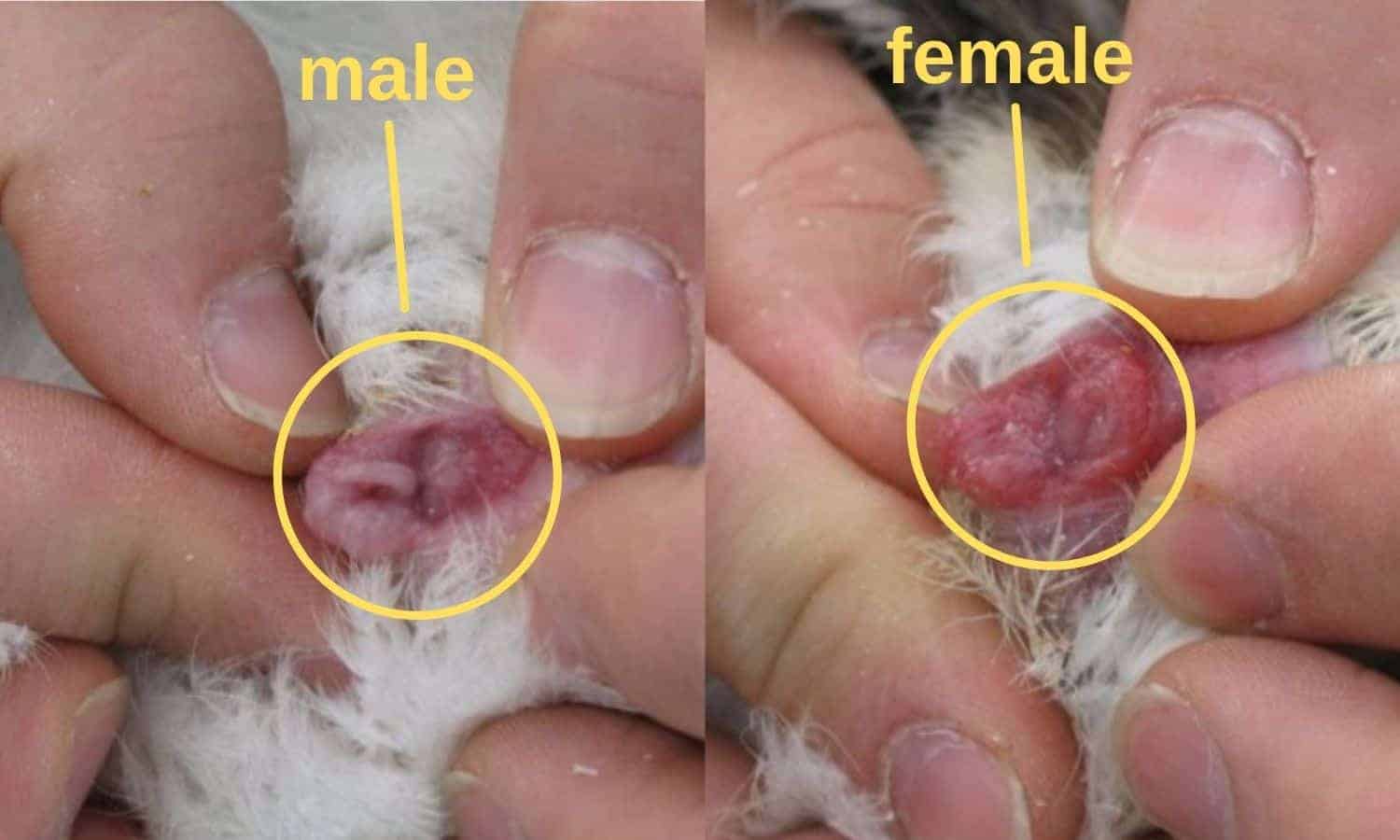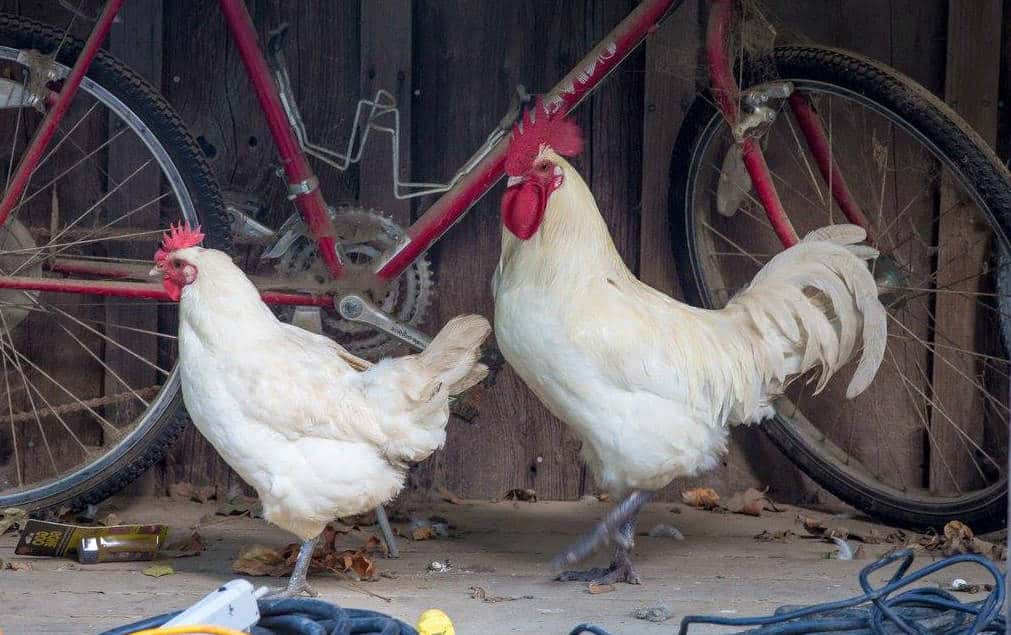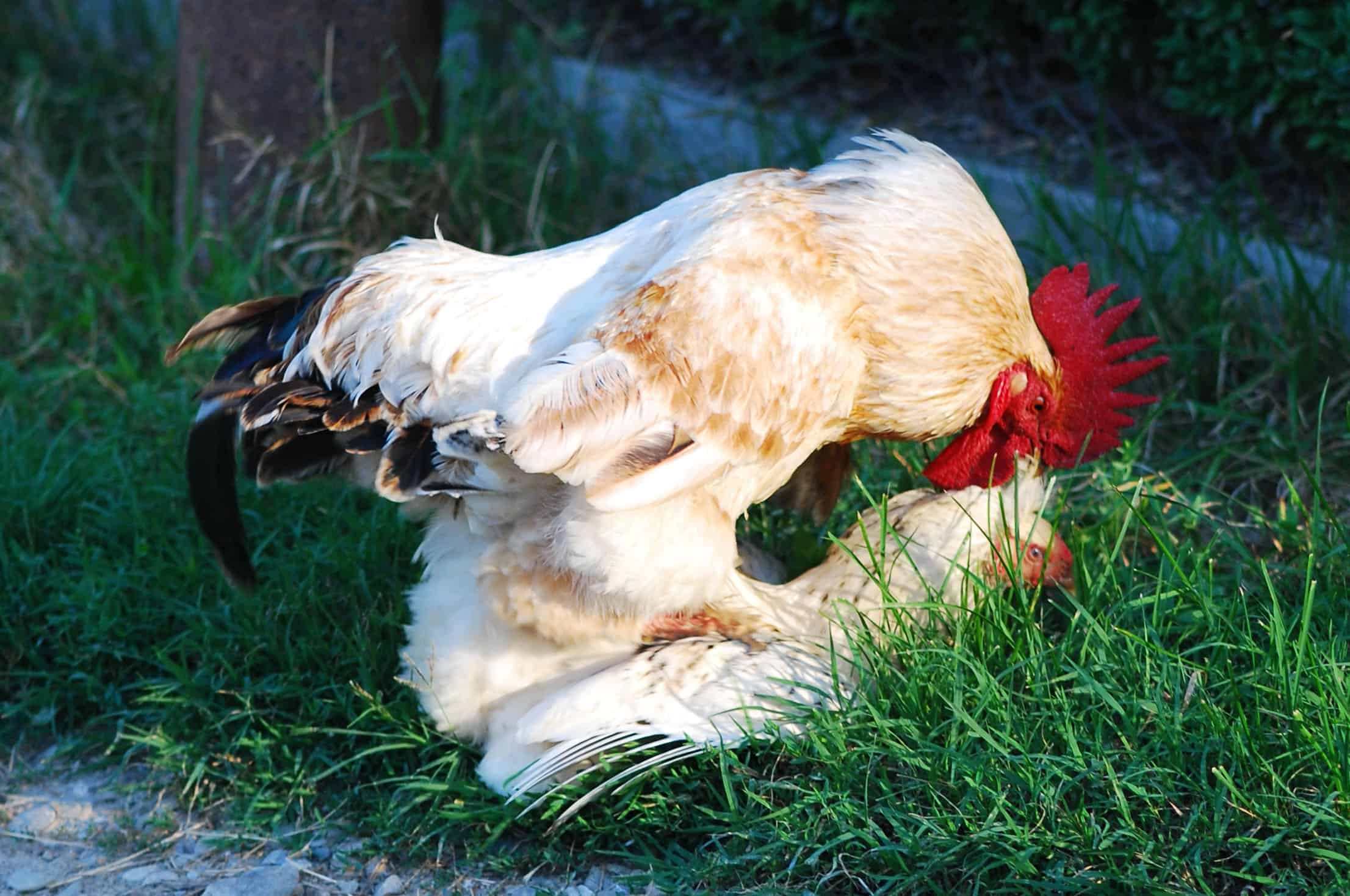When it comes to raising chickens, the average person typically has a few questions. Whether you are keeping chickens as pets or incorporating them as part of your farm, you may wonder about the difference between hens and roosters. Granted, the crow and the strut of a rooster are unmistakable. However, even still, there are times when noticing the difference can be a challenge.

This article will cover
- Hen vs. Rooster: The Differences
- What is Vent Sexing?
- What is Feather Sexing?
- What are Auto-Sexed Breeds?
- How Do I Know if My Chicken is a Pullet or a Cockerel?
- How to Tell a Rooster from Hens?
- What to do If Your Hen is a Rooster?
- Advantages of Owning a Rooster
Hen vs. Rooster: The Differences
When it comes to raising chickens, there are a few terms that you should become familiar with. Apart from the terms hen and rooster, there are also the terms cockerels and pullets. While these terms refer to different birds, they are all chickens.
A rooster is a male chicken, and a hen is a female chicken. A cockerel is a young rooster less than one year of age, and a pullet is a young hen less than one year of age. Although these terms can be confusing to those unfamiliar with poultry, remember that hens and roosters are both chickens – the terms simply refer to their gender and age.
What is Vent Sexing?

Vent-sexing began in Japan in the 1920s. For this reason, it is also called the Japanese sexing method. Those who practice the art of vent sexing have to go through extensive training and complete rigorous testing.
Performing vent sexing incorrectly can lead to the death of a baby chicken. In order to properly vent sex, an expertly trained professional will gently squeeze the baby chick, causing it to defecate and open a vent.
The sexing expert will then be able to check to see whether the chick is a hen vs. a rooster, depending on whether the lump inside is large or small. Sexual organs will also be able to be examined during this time. Vent sexing is not recommended for anyone other than experts. We have a complete guide to sex chickens if you want something more specific.
What is Feather Sexing?

Feather sexing involves observation to identify a hen vs. a rooster. Young chicks could be able to be determined according to their feathers. Female chicks will have longer wing feathers than male chicks.
However, male chicks will have longer tail feathers. Comparing the lengths of the feathers could help someone determine whether or not they have a hen or a rooster chick.
What are Auto-Sexed Breeds?
Some breeds are easier to distinguish between male and female chicks than others. These breeds are known as auto-sexed breeds. Typically, these chicks can be separated between males and females right after they hatch due to their distinctively different markings.
For instance, a female may have a different colored spot on her head than a male chick. In other cases, males may have slightly different colored legs than females. Breeds that are easy to identify include Rhode Island Reds and New Hampshire chickens.
How Do I Know if My Chicken is a Pullet or a Cockerel?

When someone gets chicks, which are baby chickens, there is never for sure certainty on what sex they are. It is tough to determine the gender of chicks, especially if you purchase chicks from a local chicken breeder.
It’s known as straight-run chickens, meaning the farmer does not determine gender. If you prefer to see the gender of the chicks you are buying, you will have to obtain your chicks from a hatchery.
However, even their trained professionals are not always accurate when sexing their baby chicks. It is never advised for a backyard breeder to attempt to vent sex with their chicks independently, as this could lead to issues including death for the chick. Instead, it is best to identify chicks by observation or by utilizing auto-sexed breeds.
One of the best methods to find out whether or not you have a pullet or a cockerel is to wait around and see. Depending on the breed of chicken, you may have to wait longer than others to find out if it is a pullet or a cockerel.
This age range is typically around three to six months. However, cockerels may start crowing earlier than that. As they age, you may be able to begin identifying certain traits that will help in determining a hen vs. rooster.
How to Tell a Rooster from Hens?

1. Combs and Wattles
You may also be able to tell hens vs. roosters by their combs and wattles. The comb is the area of the chicken that is on the top of the chicken’s head. This can appear on either the head of a rooster or a hen.
However, when a rooster grows a comb, it is generally larger and brighter than a hen’s. Wattles are the fleshy skin parts located under a chicken’s neck or beak area. In roosters, wattles are larger and more brightly colored.
Wattles on a rooster generally hang down longer than a hen’s wattle. A young chick may develop a more significant or brighter wattle or comb than the other chickens in the flock. It may be a good indicator of its gender. However, this is not always accurate.
2. Feathers
There are three main types of feathers on a chicken. These types of feathers are known as hackle feathers, saddle feathers, and tail feathers. Hackle feathers are the feathers that can be found around a chicken’s neck.
Hackle feathers can be found on both hens and roosters. Hens will generally have shorter hackle feathers than that of a rooster. A rooster has longer hackle feathers that are typically more pointed.
Saddle feathers are the feathers that grow on the backs of roosters. Saddle feathers are not found on a hen. If you need a helpful tip on remembering saddle feathers, think about where you put a saddle on a horse – the back. So, that is where the saddle feathers are located. Once a rooster and a hen mature, it is easy to notice the difference in saddle feathering.
You may also determine hens vs. roosters by looking at their tail feathers. Tail feathers are found at the end of a chicken and are located on both hens and roosters. However, a rooster’s tail feathers are generally more exuberant. They may be longer and more colorful than a hen’s.
3. Feather Tails
While the appearance of a chicken’s tail feathers can provide some clues about its sex, it is not always sufficient to make a definite determination. While roosters generally have longer and more pointed feathers in their tails than hens, this is just one characteristic among several that can help identify the gender of a chicken.
While roosters generally have longer and more pointed feathers in their tails than hens, this is just one characteristic among several that can help identify the gender of a chicken. Other features such as comb size, coloration, or behavior patterns may also need to be considered (such as crowing, which only roosters do).
However, even with all these factors combined, it can still be difficult to accurately discern between males and females, so DNA testing may need to take place, especially for breeding purposes where accurate identification is critical. Ultimately, therefore, visual observation alone cannot provide definitive proof of whether a bird is male or female in many cases.
4. Behavior

Another way you may be able to distinguish hens from roosters is by observing their behavior. Roosters may become a bit rowdier than hens and be more vocal. You may hear a young rooster begin to crow or show its dominance to the flock. As roosters mature, they may challenge one another or cause disagreements within the flock.
However, this is not always the case; hens can be troublemakers. Roosters may stand taller on their legs or puff out their chests. While hens can be rowdy, too, this is most common among roosters.
5. From The Egg
You may be able to identify the gender of your flock by simply looking at their eggs. This only applies if you are hatching your flock from eggs and not purchasing chicks. You or the farmer may be able to inspect the egg to determine if it is a hen vs. a rooster. It can be done by examining the shape of the egg.
It is a common myth that the shape of an egg can indicate the sex of the chick inside, with eggs having a sharp pointed tip allegedly being rooster eggs and rounder eggs being hen eggs. However, this is not true. The shape of an egg is not a reliable indicator of the sex of the embryonic chicken.
This applies regardless of the color of the egg. While checking the tips is a tried and true method that many farmers utilize, it is not always foolproof and human error, as well as outliers, can still come into play.
What to do If Your Hen is a Rooster?

It could happen to any chicken farmer. However, there are some measures you can take if your hen turns out to be a rooster. If you ordered pullets from a breeder, then you contact the breeder when it turns out to be a rooster. Hatcheries will likely not be taking back your rooster, but you can secure a refund.
Purchasing from a tractor supply store or similar will mean that you probably will not get a refund, as these will be straight-run chickens. However, there are advantages to owning a rooster as long as there are no laws where you live against keeping one.
Advantages of Owning a Rooster
Roosters can help to keep your flock in order, primarily if your hens are known for wandering off at night. A rooster is generally fiercely protective over his flock and will do anything to protect them.
This helps to keep your hens safe from any lingering predators. If your hens are having difficulty finding some grub, a rooster will help to provide for them and go on the search for some bugs. Roosters can also offer you fertilized eggs, allowing you to sell to potential buyers wanting to raise their own chicks.
Summary
Owning a flock of chickens can be a memorable experience. However, many chicken owners need to recognize the difference between hens and roosters. Knowing these differences will help chicken owners maintain an optimal flock and provide the best environment for their chickens.

Joseph Hudson has been raising chickens for over 15 years. In 2018, he completed the Agriculture & Natural Resources program at Mt. San Antonio College. He currently raises over 1400 chickens on his 7.5-hectare farm. He keeps sharing his experience on raising healthy and happy chickens on Chicken Scratch The Foundry.







This was very helpful, thank you!
#4
Hens will take the place of a rooster if there isn’t a rooster. Meaning they will take charge of the flock,
hop on the hens and
stop laying…
Hi Barbie,
Ah, the mysteries of chicken politics! Without a rooster, sometimes a hen thinks, ‘I got this!’ and takes the lead. She might even try on his fancy dance moves! As for the egg-laying pause? Maybe she’s just too busy bossing around. Chickens, they’re full of surprises! 🐔😂